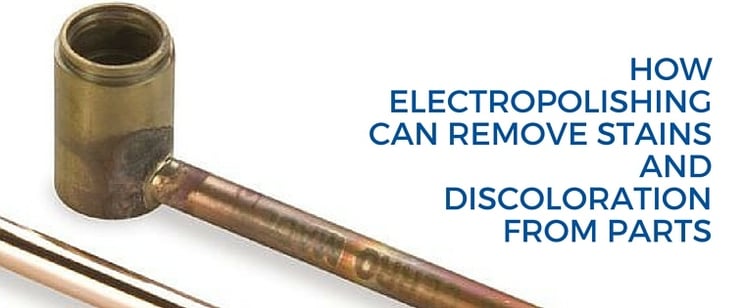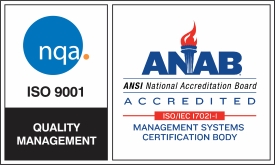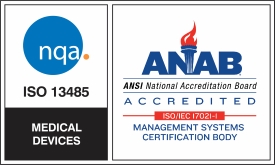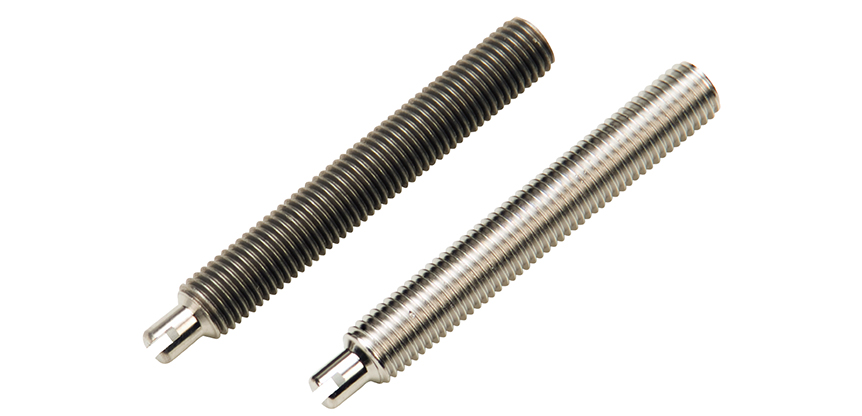
Stained or discolored parts are unsightly at minimum. When used in critical applications such as electronics or consumer products, these stains become even more problematic, affecting performance and overall appearance.
While there are many finishing processes that help remove stains and discoloration on metal parts, few can do so without altering the surface or the integrity of the part.
Engineers and manufacturers alike require a process that can easily eliminate the stains or discoloration from parts without reducing the Ra values, compromising cleanliness, or performance.
Common Sources of Stains and Discoloration in Parts
Machining oils, lubricants and polishing compounds are common culprits for stains. Parts can also develop stains or discoloration when they come in contact with dissimilar metals in other components within an assembly.
Heat-treating parts is one of the most common sources of discoloration on metal parts. Discoloration from heat-treating can vary from straw color to a very dark, deep brown. Even parts heat-treated in a vacuum can become discolored if oxygen is not adequately removed from the furnace.
Aqueous cleaning processes can also create stains if not properly performed. In addition, parts that require vinyl protection must be free of adhesive prior to electropolishing. If the clear adhesive is not removed first, the result will be a surface that is stained due to resist patterns that form due to the non-conductive material on the surface.
Why Remove Stains and Discolorations from Parts
Stains and discoloration on parts are not always detrimental to the parts themselves. However, in many applications, stains and discoloration may affect corrosion resistance, part performance and saleability. For example, parts such as electrodes or contacts used in electronics applications require an optimal surface finish to ensure maximum conductivity.
When parts are used in consumer appliances or highly visible applications, aesthetics are crucial. In addition, parts that show stains or discoloration are often considered contaminated and unclean.
In most cases, parts that have started to develop minor rust or blush rust can be cleaned with electropolishing to eliminate further corrosion and possible degradation of the component.
How Electropolishing Removes Stains and Discoloration
Electropolishing removes a uniform layer of metal from the surface of parts to effectively remove stains and discoloration resulting from lubricants, heat-treating or other finishing processes.
Electropolishing not only removes the discoloration, but provides other important benefits as well. This “reverse plating” process increases corrosion resistance, removes burrs, improves microfinish and removes surface contaminants all in one process.
Electropolishing is highly recommended because it works with nearly any alloy, including copper, brass and carbon steels – metals that are often affected by staining and discoloration.
Do you have a problem with staining or discoloration on your metal parts? Talk to an Able Electropolishing metal finishing specialist to discuss your finishing problems.





